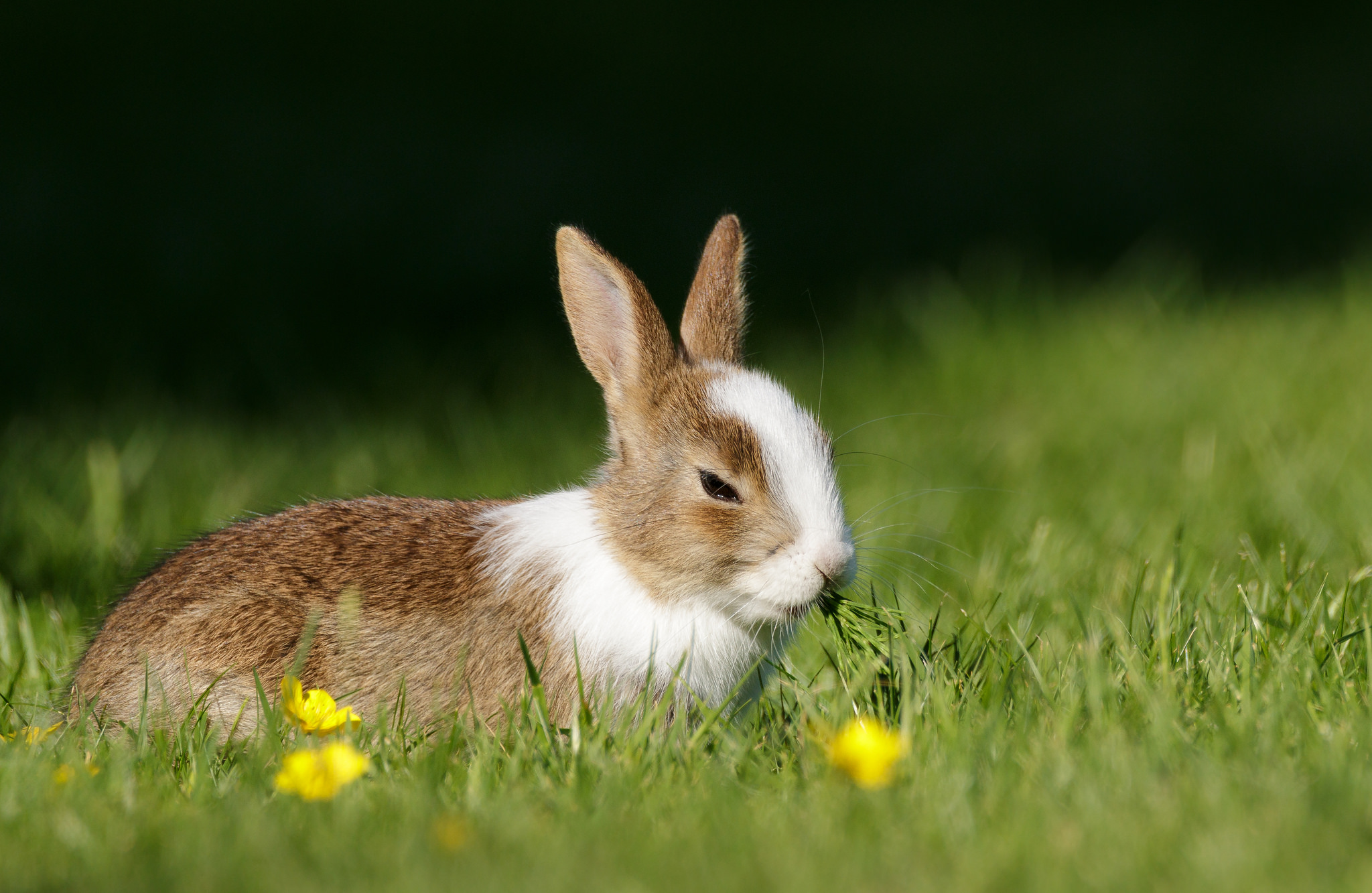 Evolution & Behaviour
Evolution & Behaviour
How the domestic rabbit became fearless
Domestic rabbits are much more fearless than wild rabbits. This study shows that tameness in domestic rabbits is associated with changes in brain regions that control perception of fear and response to fear.

The domestication of animals progresses gradually as wild animals' genomes evolve and they adapt to life in captivity. Such genetic changes may manifest themselves in how an animal looks, behaves, functions and reproduces. The most striking of these modifications is tameness, - a common feature among domesticated species - which means the animals are gentler and fearless of humans, compared with their wild ancestors. An important and mostly unresolved question is which genetic changes cause tame behavior and how they affect brain function. A deeper understanding of the biology of tameness in domestic animals may also help model how brain morphology affects behavior in humans.
Expanding on a previous study, in which we had found that the DNA of wild and domestic rabbits differ mostly in genes that play a role during brain development, we have now used high-resolution magnetic resonance imaging (MRI) to show that wild and domestic rabbits' brains differ in morphology.
Wild rabbits have a very strong flight response, which means that they flee when threatened. In nature, this helps them to avoid predation. In contrast, most domestic rabbits are docile and their flight response is almost abolished. Charles Darwin highlighted this striking shift in behavior in On the Origin of Species: "Hardly any animal is more difficult to tame than the young of the wild rabbit; scarcely any animal is tamer than the young of the tame rabbit."
If one raises wild and domestic rabbits under similar conditions they still behave differently - meaning that the differences arise from their genes rather than upbringing. Humans themselves have been propagating these desirable genetic traits through selective breeding ever since they started keeping rabbits in captivity more than a thousand years ago.
We raised eight domestic and eight wild rabbits under very similar conditions to minimize differences in behavior arising due to environment or social interactions. We acquired brain MRI for all of them, then analyzed and interpreted the images. Firstly, domestic rabbits have a smaller brain-to-body size ratio than wild rabbits, a difference that has been previously documented in several other domestic animals. Secondly, domestic rabbits have a reduced amygdala - the brain area involved in fear-sensing - and an enlarged medial prefrontal cortex, which controls responses to fear. Thirdly, domestic rabbits have less of the tissue connecting different parts of the brain, the white matter. This hampers the communication within and between brain hemispheres and may explain why domestic rabbits react slower and are more phlegmatic than their wild counterparts. These changes in brain morphology and their consequences for its function could explain the more tame behavior of the domestic rabbits, including their weak flight response.
The scale of the differences in the organization of the brain was surprising as wild and domestic rabbits have only evolved separately for about 1000 years - a very short period of time in evolutionary terms. No previous study in domestic animals has explored changes in brain morphology in such a depth as this one, but we hypothesize that similar changes in brain morphology will very likely be present in other domestic animals. Does this result have implications for human biology? Our life experiences heavily influence our behavior, but the rabbit data strongly support the notion that differences in our genetic constitution impact how we sense and handle fear.
Original Article:
I. Brusini et al., Changes in brain architecture are consistent with altered fear processing in domestic rabbits. Proc Natl Acad Sci U S A 115, 7380-7385 (2018)Next read: How almonds became sweet by Raquel Sánchez-Pérez , Birger Lindberg Møller
Edited by:
Dr. Beata Kusmider , Managing Editor
We thought you might like
How did wild cats turn into our beloved domestic animals?
Jul 19, 2021 in Evolution & Behaviour | 3.5 min read by Magdalena Krajcarz , Maciej KrajcarzHow cats conquered the Ancient world: a 9,000-years DNA tale
Sep 20, 2017 in Evolution & Behaviour | 4 min read by Eva-Maria Geigl , Thierry GrangeThe healthy happiness behind dog ownership
Aug 16, 2018 in Evolution & Behaviour | 2.5 min read by Mwenya MubangaFair or unfair? The infinite patience of domestic dogs
Oct 12, 2018 in Evolution & Behaviour | 3.5 min read by Jenny EsslerMore from Evolution & Behaviour
Size does not matter: direct estimations of mutation rates in baleen whales
Jan 29, 2025 in Evolution & Behaviour | 4 min read by Marcos Suárez-MenéndezThe Claws and the Spear: New Evidence of Neanderthal-Cave Lion Interactions
Jan 22, 2025 in Evolution & Behaviour | 3.5 min read by Gabriele RussoA deep-sea spa: the key to the pearl octopus’ success
Jan 20, 2025 in Evolution & Behaviour | 3.5 min read by Jim BarryFeisty fish and birds with attitude: Why does evolution not lead to identical individuals?
Aug 31, 2024 in Evolution & Behaviour | 3 min read by Lukas Eigentler , Klaus Reinhold , David KikuchiEditor's picks
Trending now
Popular topics


